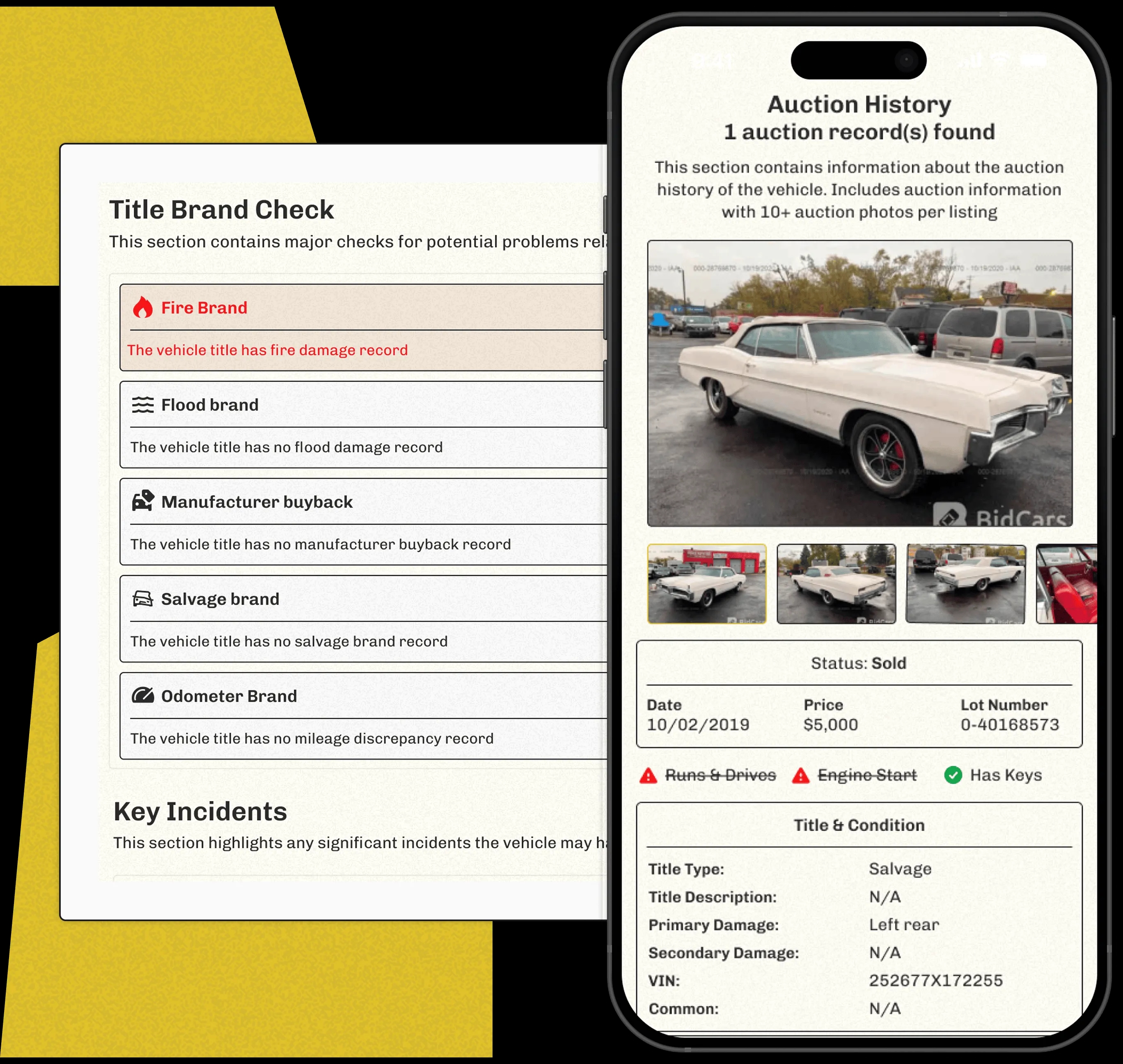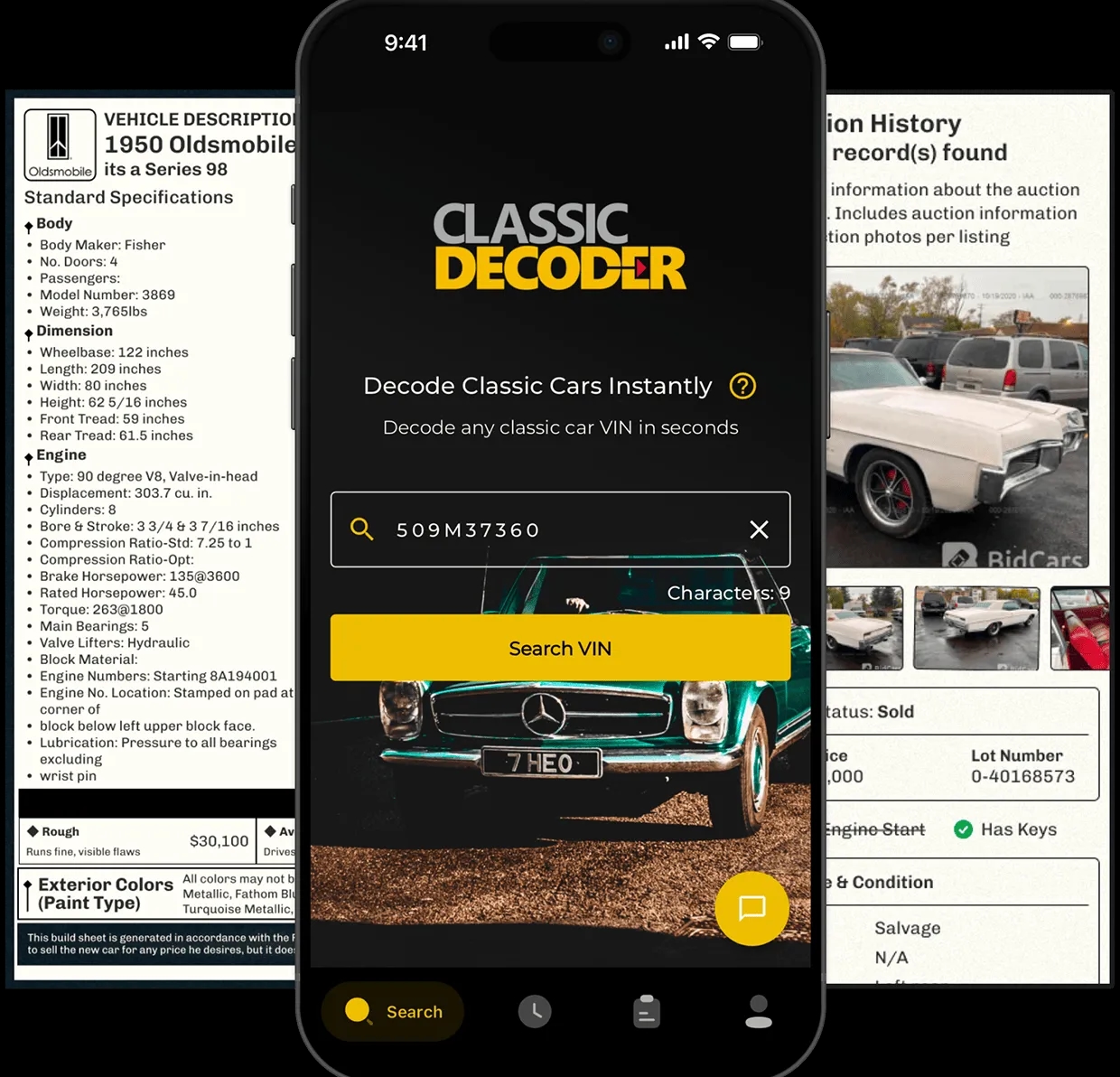1969 Pontiac Grand Prix
The '69 Pontiac Grand Prix: a groovy muscle car! Its sleek, personal-luxury lines, a departure from its predecessors, became instantly iconic. A symbol of the late 60s, it blended performance and style, making it a cultural touchstone and a collector's dream today. Think sharp angles and a long hood.
Decode Classic VINs to Get Vehicle History Report and Build Sheet
The Legendary 1969 Pontiac Grand Prix: A Cultural Icon
The 1969 Pontiac Grand Prix stands as a testament to an era of automotive excellence, where luxury met performance. Introduced as a personal luxury car, this model represented a unique blend of style and capability that deeply resonated with the burgeoning middle class of the 1960s. Fast forward a bit and you'll see its transformation into an icon of American car culture.

1969 Pontiac Grand Prix Models:
Select the vehicle's model to see the correct data for it.
How Much is Pontiac Grand Prix Worth?
Original MSRP :$3,777.00
Outstanding
Clean
Average
Rough
1969 Pontiac Grand Prix Specs
Interested in buying a classic car or selling one?
Access detailed history reports for classic vehicles from hundreds of manufacturers.
- Accident Records
- Theft Records
- Loan & Lien Information
- Auction Information
- Salvage Information and more

History of the 1969 Pontiac Grand Prix
Introduction of the Pontiac Grand Prix
This story kicks off in 1962, when Pontiac first rolled out the Grand Prix. By 1969, it had evolved into a star in its own right. Built on the GM A-body platform, this model took the muscle car concept and added a twist of luxury. Folks loved it for its unique style and powerful V8 engines, which made it a direct contender in the muscle car market.
Evolution and Market Position
In the swinging 60s, cars weren't just about getting from A to B. Nope, they became an extension of personal identity. During this time, the Grand Prix carved out its niche, appealing to those who wanted their vehicle to reflect personal style and social status.
Cultural Impact
As suburban life boomed, so did the symbolic nature of car ownership. The Grand Prix, with its sleek lines and luxury trappings, became a marker of success and aspiration. It didn't just drive—it told a story of freedom and identity.
Learn more about a classic car: Get Build Sheet by VIN.
Access reproduced classic build sheets to learn more about your classic vehicle details.
- Standard Specifications
- Original Base Price
- Standard & Optional Equipment
- Exterior & Interior Colors
- VIN ID & Location description

Detailed Specifications of the Grand Prix
With its roots in performance, the Grand Prix was fitted with formidable engine options, including the 455 cubic inch V8. This powerhouse allowed for eye-catching acceleration, making it a favorite at classic car shows and a staple in popular culture .
Famous Figures Who Own the 1969 Pontiac Grand Prix
In the realm of classic cars, certain folks keep the legend alive by their sheer passion and stories worth telling.
Mark Henderson
Take Mark Henderson from Kokomo, Indiana. His tale with the Grand Prix, specifically a Castilian Bronze factory four-speed model, is one of rediscovery and community. Bought originally by his brother, this car became a family staple—from honeymoon memories to first rides home for his daughters .
Jay Leno
While the document doesn't spotlight Jay Leno, many classic car enthusiasts know his collection, famed for its extensive range of vintage beauties, could easily include a 1969 Grand Prix. His passion for restoring life's classic moments into the present aligns perfectly with owning such iconic models.
Fun Facts About the Grand Prix
Did you know? The 1969 Pontiac Grand Prix wasn't just a muscle car. Its prowess extended beyond speed—its luxurious feel, from a plush interior to an attention-grabbing exterior, made it a dream ride for many .
Interested in Buying or Selling a Classic Car?
When diving into the classic car market, the importance of documentation cannot be overstated. Whether you're looking to snag one of these beauties or pass yours onto a new owner, getting your paperwork in line is key:
Accident Records
Theft Records
Loan & Lien Information
Auction Information
Salvage Information and more
Building the Right Story
For those interested in the vehicle's original specs, a is the gold standard. This document will walk you through the car's true essence as it rolled out of the factory.
So, there you have it. Owning a piece of iconic automotive history like the 1969 Pontiac Grand Prix isn't just about the ride—it's about becoming a steward of an era. Through ownership, you keep a vibrant cultural narrative alive. Drive on, fellow enthusiasts!
Classic VIN Decoder App |Now available on both Android and iOS!
At Classic Decoder, we believe that developing a mobile app is a great way to extend our classic car data solution hub to as many users as possible across the globe. Our app is built with users and precision in mind. It holds the key to unlocking the history and details of any retro car at your fingertips. It also comes with fascinating and user-friendly features that make it stand out from other mobile apps designed for this purpose.
The Classic Decoder app lets you decode and lookup any classic VIN in a flash. Access accurate vehicle information and history, make an informed decision faster, and buy and trade in classic cars with confidence.

Download The Classic Decoder App now.
Some unique features include:
- Support all classic VIN lengths from 5 to 13 digits
- Support classic cars produced from 1910 – 1980
- Online Garage features – to add and manage your vehicles
- 24/7 Customer Support
- Easy onboarding for first-time users
Explore Pontiac Grand Prix from Other Years
Frequently Asked Questions
Well, let's see... The '69 Grand Prix is pretty unmistakable, you know? It's got that distinctive, long hood and short deck styling; really a classic muscle car look. Think of it like a sleek, powerful panther, crouched low to the ground. You'll also notice the hidden headlights—a neat trick for the time—and the prominent, sculpted side panels. The taillights are another giveaway; they're unique to that year. Oh, and don't forget about the various trim levels and options; they all had their own little quirks and details that set them apart.
Okay, so under the hood, you had quite a few choices! The base engine was a 350 cubic inch V8, which, let's face it, was still plenty powerful. But if you wanted more oomph, you could go all the way up to a 428 cubic inch V8; that thing was a beast! Somewhere in between, you had a 400 cubic inch option as well. It's worth noting that horsepower ratings varied a bit depending on the specific carburetor and other configurations—some of the specifics, man, they're real murky. Think of it like ordering a pizza: you got your base model, and then you could add all sorts of toppings (options) to make it really yours.
This is tricky, because it depends hugely on the condition, the options, and even the specific color. A perfectly restored, low-mileage beauty? That's gonna command a pretty penny. We're talking serious money; think top-dollar stuff. But a car needing some TLC? Yeah, that's a different story altogether. Think of it like buying a house – the price varies wildly based on the upgrades and how much work you've got to do. Condition is everything here; research comparable sales in your area for the most accurate estimate.
Like any classic car, this one has its quirks. You'll want to watch out for things like the brake system—those systems can be a pain in the neck sometimes; common problems in older cars. The electrical system can also give you some headaches, and the suspension; it can wear down over time. Of course, this depends on how well the car has been maintained over the years. Regular maintenance is key, just like with your regular car; don't neglect your classic. Think of it as a relationship: some tender loving care goes a long way.
Finding parts for a classic like this can be a bit of a treasure hunt, but don't worry—it's totally doable! There are tons of online resources, specialized parts suppliers that cater to classic car enthusiasts, you name it. And let's not forget about local swap meets and car shows. You might even find a local club; they might have some great connections. Sometimes you find that perfect part tucked away in an unlikely place! It’s like a scavenger hunt—but with car parts, which, you've got to admit, is kinda cool.

